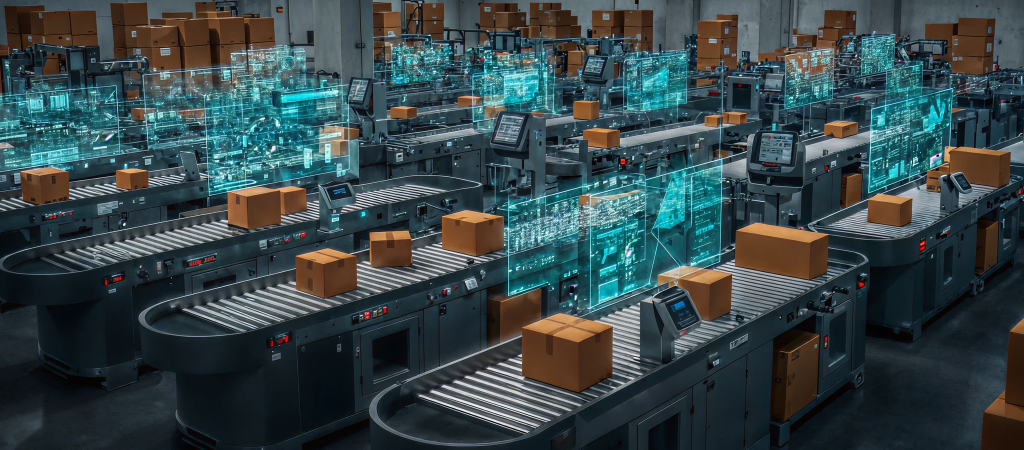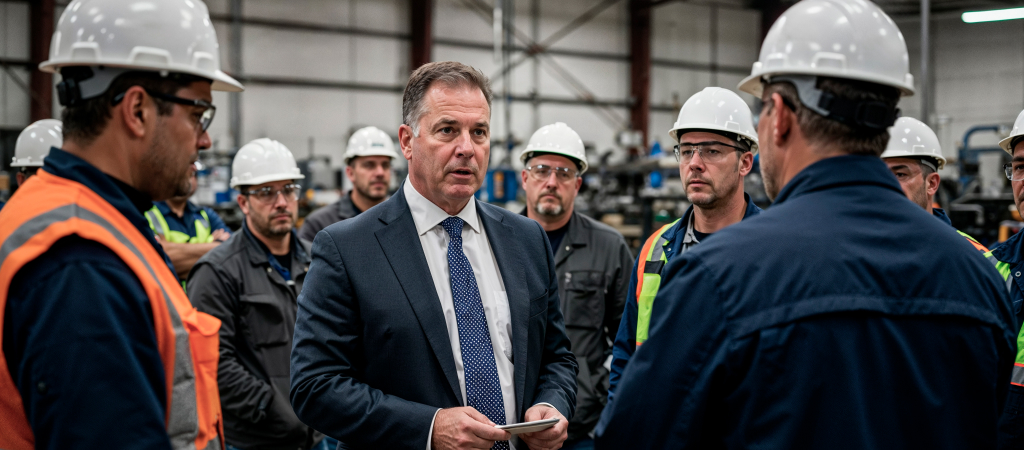The logistics industry is the backbone of global trade, ensuring goods are moved efficiently from manufacturers to consumers. However, in recent years, the sector has faced a growing and critical challenge: labor shortages. As global demand for e-commerce, just-in-time delivery, and supply chain efficiency increases, the lack of available and skilled workers threatens to undermine operations across the board.
This blog explores the root causes behind the labor shortages in logistics, the cascading impacts on supply chains and businesses, and how technology is stepping in to bridge the gap.
The Growing Labor Crisis in Logistics
From warehouses and distribution centers to truck fleets and ports, labor shortages are being felt at every stage of the logistics chain. According to global surveys and national transportation bodies, millions of logistics-related roles remain unfilled, with the situation projected to worsen unless proactive solutions are implemented.
Causes of Labor Shortages in Logistics

Understanding the “why” behind this labor crunch is essential. Here are the key contributing factors:
1. Aging Workforce
A significant portion of logistics workers—especially truck drivers and forklift operators—are nearing retirement. The average age of a truck driver in the U.S. is over 50, with fewer young workers entering the field to replace them.
2. Lack of Skilled Workers
Modern logistics increasingly depends on digital tools, automation, and real-time systems. However, the supply of skilled professionals trained in logistics tech hasn’t kept pace with industry needs.
3. Tough Working Conditions
Long hours, repetitive physical labor, and high-stress environments discourage many from choosing logistics as a career path. Delivery drivers, warehouse workers, and port staff often face demanding schedules with minimal work-life balance.
4. Pandemic Aftershocks
COVID-19 exacerbated existing labor issues. Many workers left the industry due to health concerns, burnout, or better opportunities elsewhere, and some never returned.
5. Geographic Imbalances
Some regions have ample labor but not enough logistics infrastructure, while others have the opposite. Urban hubs may struggle with driver shortages due to high living costs or traffic congestion.
Impacts of Labor Shortages on Logistics & Supply Chains

The ripple effects of workforce shortages are extensive and often costly:
1. Delivery Delays
When there aren't enough drivers or warehouse workers, shipments get delayed, disrupting schedules and affecting customer satisfaction.
2. Increased Operational Costs
To attract labor, companies are offering higher wages and incentives, driving up costs across logistics operations. Overtime pay, training, and retention efforts also add to the burden.
3. Decreased Productivity
Fewer hands on deck means slower processing times in warehouses, inefficient inventory management, and missed delivery windows.
4. Customer Dissatisfaction
Longer delivery times and inconsistent service can tarnish brand reputation, especially in competitive sectors like e-commerce and food delivery.
5. Strain on Existing Workforce
Overworked staff are more likely to burn out or quit, which accelerates turnover and deepens the labor crisis.
Tech Solutions Easing the Logistics Labor Crunch

Technology is rapidly emerging as a game-changer in addressing labor shortages. Here’s how innovative tools and systems are transforming the industry:
1. Automation & Robotics
Modern warehouses are deploying:
- Automated guided vehicles (AGVs) for picking and sorting
- Robotic arms for loading/unloading
- Autonomous forklifts to transport goods
These machines reduce the need for repetitive manual labor and increase throughput efficiency.
Example: Amazon uses Kiva robots in fulfillment centers to transport shelves to human pickers, drastically speeding up processing times.
2. AI-Powered Workforce Management
Artificial Intelligence helps optimize:
- Shift scheduling
- Resource allocation
- Predictive maintenance for equipment
By analyzing workloads, demand forecasts, and employee availability, AI ensures operations run smoothly even with limited staff.
3. Digital Twin & Simulation Tools
Using a virtual replica of the supply chain, logistics managers can:
- Identify bottlenecks
- Test solutions in real time
- Improve workflows without trial-and-error in the real world
This tech improves decision-making and reduces the pressure on the ground workforce.
4. Self-Driving Vehicles and Drones
Though still in testing or early implementation stages in many regions, autonomous delivery trucks and drones are showing promise for:
- Short-distance deliveries
- Remote area supply
- Last-mile logistics
This can free up human labor for more complex tasks and reduce dependency on drivers.
5. Warehouse Management Systems (WMS)
Modern WMS software, powered by cloud and AI, automates:
- Inventory tracking
- Order picking optimization
- Real-time analytics
This significantly cuts down on human errors and streamlines warehouse operations with fewer workers.
6. Augmented Reality (AR) & Wearables
AR-powered smart glasses and wearable devices:
- Guide warehouse staff through picking routes
- Display product info hands-free
- Monitor performance metrics
These tools boost productivity and reduce the learning curve for new or temporary workers.
Long-Term Solutions Beyond Tech

While technology is a major enabler, companies must also focus on systemic improvements to attract and retain talent:
1. Training & Upskilling
Invest in reskilling programs to help workers adapt to tech-driven roles, such as operating robotics or managing digital systems.
2. Better Working Conditions
Flexible shifts, wellness initiatives, and ergonomic workspaces can help improve retention and attract new talent.
3. Diversity & Inclusion
Expanding hiring to include more women, veterans, and underrepresented groups can tap into new labor pools.
4. Outsourcing & Gig Models
For certain operations, partnering with third-party logistics (3PL) firms or using gig-based delivery models offers flexibility during demand surges.
The Road Ahead: A Human-Tech Balance
The future of logistics will be built on a hybrid model—one where humans and intelligent systems work side by side. While automation can take over repetitive tasks, human workers will still be crucial for:
- Supervision
- Problem-solving
- Customer interaction
- Strategic planning
By embracing technology alongside workforce empowerment, the logistics industry can solve the labor crisis, improve operational resilience, and gear up for the next era of global commerce.
Final Thoughts
Labor shortages in logistics are not just a temporary hiccup—they are a wake-up call for the entire supply chain ecosystem. But within this challenge lies an opportunity: to reimagine how logistics workforces operate, evolve, and thrive. With the right blend of innovation, investment, and inclusion, the industry can overcome its workforce woes and build a smarter, more sustainable future.
FAQ’s
- What are the main causes of labor shortages in logistics?
An aging workforce, lack of skilled workers, poor working conditions, pandemic disruptions, and geographic labor mismatches are key contributors to the labor shortage in logistics. - How do labor shortages impact logistics operations?
They lead to delivery delays, increased costs, reduced productivity, worker burnout, and lower customer satisfaction across supply chain and fulfillment operations. - What technologies help mitigate logistics labor shortages?
Automation, AI for route planning and workforce optimization, robotics in warehouses, electric vehicles, and digital twin systems improve efficiency and reduce human dependency. - How can companies attract and retain logistics talent?
Offer better wages, flexible shifts, upskilling programs, safer working conditions, and inclusive hiring practices to improve workforce attraction and retention. - Are gig and crowdsourced delivery models effective?
Yes, they offer scalable, on-demand labor for last-mile deliveries, especially in urban areas, helping ease workforce pressure during peak demand.




